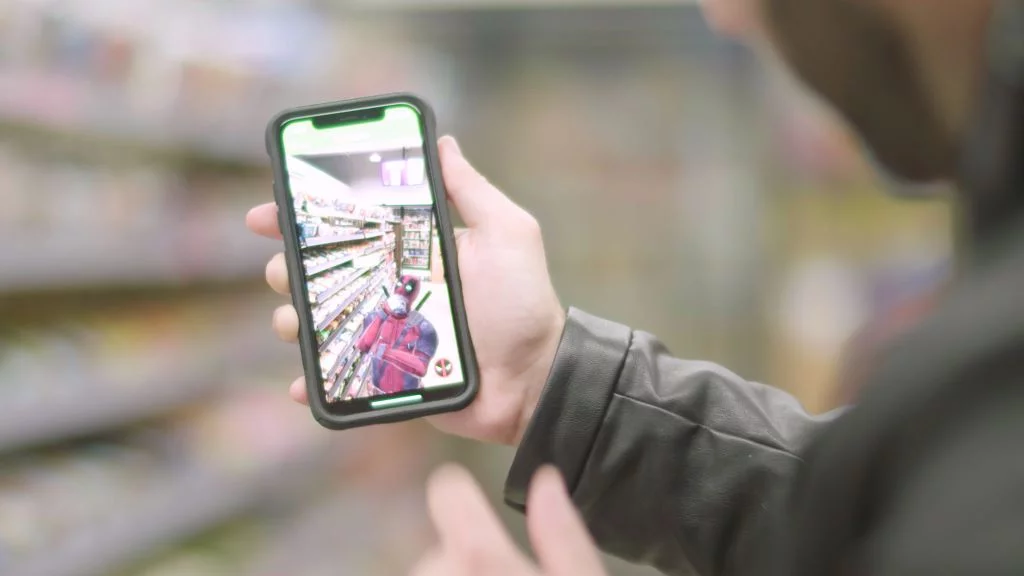The retail sector is changing because of augmented reality technology, which is giving businesses new and interesting ways to interact with customers and enhance their shopping experiences. AR is a perfect fit for the retail sector, giving businesses new opportunities to communicate with customers, promote their goods, and increase sales.
AR in Retail: A Match Made in Heaven
Customers may virtually try on things, allowing them to see how a product appears or fits without having to try it on physically, which is one of the main advantages of AR in retail.
Since the COVID-19 outbreak, more customers are looking for ways to try on things without having to physically engage with them, making this issue more crucial than ever. Retailers may improve their conversion rates and lower the percentage of returns by offering customers virtual try-on experiences.
Virtual Try-Ons and Interactive Product Displays
Virtual try-on and interactive product displays are two of the major ways that businesses are leveraging AR technology to improve the in-store shopping experience.
Using AR technology, shops can develop virtual try-on experiences that allow customers to see how an item of clothing or accessory would fit on their body without having to try it on physically.

Virtual try-on is very handy for things like glasses, makeup, and apparel. Retailers may boost the likelihood of a sale and lower the percentage of returns by allowing shoppers to see how these things would look on them.
Retailers are also embracing AR technology to improve the in-store shopping experience through interactive product displays. They can take numerous forms, such as augmented reality mirrors that allow consumers to experiment visually on makeup or interactive product displays that allow buyers to see the features and benefits of a product in real time.
Retailers may boost customer engagement and create a more memorable shopping experience by developing such kinds of interactive activities. This can result in improved consumer loyalty and sales.
While virtual try-ons and interactive product displays hold enormous promise for merchants, there are still obstacles to overcome. For example, implementing the technology can be costly, and creating experiences that function seamlessly across multiple devices can be tricky.
Personalized Shopping Experience
AR technology is also being used to deliver a more personalized shopping experience for customers. Retailers, for example, might construct AR-powered shopping assistants who guide clients through the store, making tailored recommendations and presenting information about things they might be interested in.

AR technology can also be utilized to build customized product displays that showcase products based on the customer’s specific interests. Retailers can develop displays that highlight products that the buyer is likely to be interested in using customer data and AI algorithms, improving the possibility of a sale.
The fundamental problem of using AR technology to improve product discovery and personalization is the necessity for reliable and complete data. Retailers must have access to customer data and be able to analyze it efficiently in order to deliver customized suggestions and product displays to customers.
Future of Augmented Reality in Retail
The future of augmented reality in retail is bright, with enormous potential to revolutionize the way we purchase. We should expect to see more innovative applications of AR in retail as technology advances, providing customers with tailored and engaging experiences.
The integration of artificial intelligence and machine learning is one of the most significant areas of research in AR for retail. AI can improve the accuracy and speed at which AR-powered product suggestions and customization are made. Retailers can use artificial intelligence-powered augmented reality to deliver personalized suggestions based on a customer’s purchase history, browsing habits, and preferences.
The launch of web-based AR is another fascinating trend in retail AR. WebAR eliminates the requirement for clients to download an app, making it more accessible and convenient. WebAR may be quickly implemented into a retailer’s website, offering customers an immersive and engaging buying experience.

WebAR for In-Home Retail
A web-based placement of AR technology overcomes these obstacles and has the potential to transform the retail business. That allows you to try on clothes without even going to the retail itself.
Accessibility is one of the most difficult challenges associated with traditional AR adoption. Customers must download a specialized app to access AR content in traditional AR applications. This approach can be time-consuming and inconvenient, resulting in poor adoption rates.
WebAR solves this issue by removing the necessity for clients to download an app. Instead, users may access WebAR directly from a retailer’s website, making it more accessible and convenient. This method not only saves time but also raises the possibility of adoption by making AR technology more accessible to a larger audience.
An additional significant barrier to the widespread adoption of traditional augmented reality in retail is the high development costs associated with developing AR applications for different app platforms. The development of specialized multiple AR apps takes a significant amount of time and money, making it prohibitively expensive for many merchants.
WebAR overcomes this issue by leveraging current web technologies and frameworks that produce AR experiences, such as HTML, JavaScript, and CSS. This method lowers the development expenses associated with standard AR implementation, allowing merchants to build engaging and immersive experiences at a fraction of the cost.
Due to the specific hardware and software needed for traditional AR implementation, many devices cannot use it. Because of this incompatibility, the potential audience for AR experiences is reduced, and the impact of AR in retail is limited.
WebAR resolves this issue by taking advantage of modern web browsers, allowing it to be compatible with a wide range of devices such as smartphones, tablets, and desktop PCs. This method enables merchants to build AR experiences that are more accessible to a wider audience, which improves the effect of AR in retail.
Conclusion
In conclusion, augmented reality technology has the potential to transform the retail sector completely. We can anticipate a substantial change in the way we buy as shops continue to experiment with new AR applications. This change will make shopping more immersive, interactive, and personalized.
Guest Post
About the Guest Author(s)

Vladislav Bondarenko
Vladislav has been working for more than 3 years in the AR industry. He is currently on the founding team of AR startup Geenee. He specializes in 3D engineering, computer vision, and physics programming.